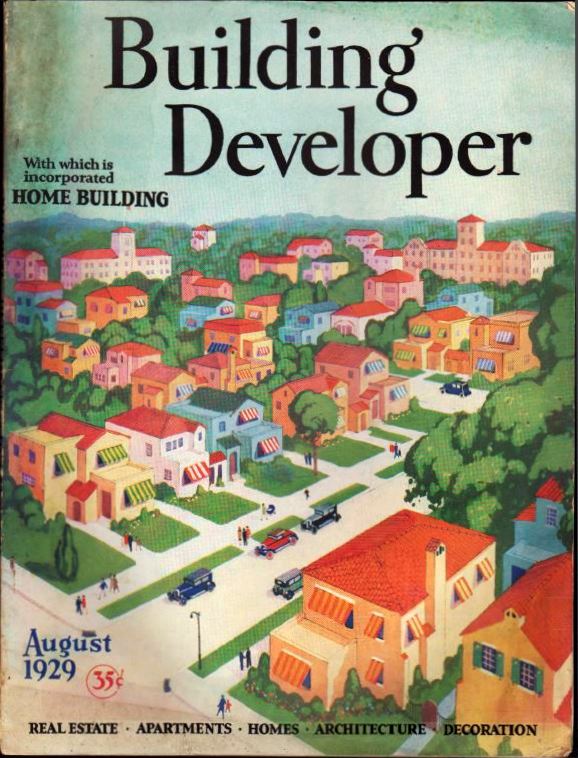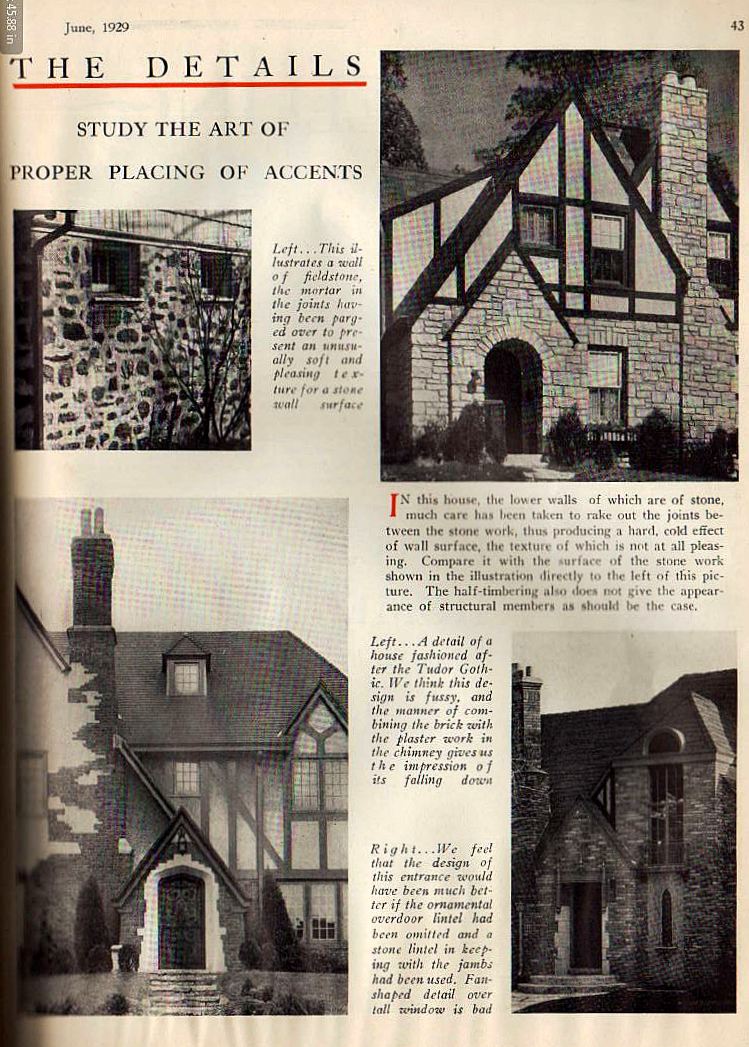Learning to Critique Ourselves
Learning to Critique Ourselves
In the early stages of research for my Timeless House book, I read that in some Renaissance cities, craftsmen’s shops were open to the public. Passerby’s could watch artisans at work and even critique their products. The towns that had open market artisan shops, also were the towns renowned for the finest wares.
I was reminded of this as I was looking through my library and ran across some old Building Developer magazines. This was a magazine that first appeared in the late 1920’s and was originally published by the well-known Radford publishing group.

The 1920’s, up until the crash in ’29 was a time of growing speculative building though nothing like the Levitt years and production building in the 1950’s and 60’s. By comparison, in the 1920’s, large production builders might build a few hundred houses in a year. Levitt (1950-60) was building in the 1000’s and the large production builders today will build in the 10,000’s.
Building Developer magazine, at least judging from my copies, was a gentile and refined magazine. The houses are charming and the details are architecturally appropriate. I guess this elegance surprises me because I don’t normally associate building developers with such tasteful detailing. It is refreshing and inspiring to realize that even speculative building, with strict budget line-items, can still be beautiful.
On page 42 and 43 of the June 1929 issue was a refreshing 2-page article on architectural details which reminded me of the open-craft shop of the renaissance. The article compares and critiques the facades of various homes in an open-handed and objective way.


This article struck me as enriching. Not only do the critiques still hold true, but it is clearly a healthy exercise we could benefit from today. An “open-air” critique is a powerful way to improve the beauty of our homes and end frivolous curb-appeal waste.
We live in an age when it is very hard to be critical of anything. We can’t have winners because it might hurt the self-esteem of the loser. As we cater to the feelings of the loser we risk lowering our standards so there are no losers and everything (whether it is or isn’t) is “beautiful”. For real beauty to exist, we need to critique ourselves. If we can train ourselves away from ugly detailing, we can have more appealing homes.
Just like in the renaissance towns, quality and craft will improve with open and fair public critique. The beauty of this is that not only does craft improve but the homeowner’s eye and understanding of quality also improves. This is not a process of mean-spirited disparaging but rather open educational discussion. If we were open to the critique of others, our work homes would improve. Agree? Disagree? I look forward to your feedback.
-B
Just like in the renaissance towns, quality and craft will improve with open and fair public critique.

